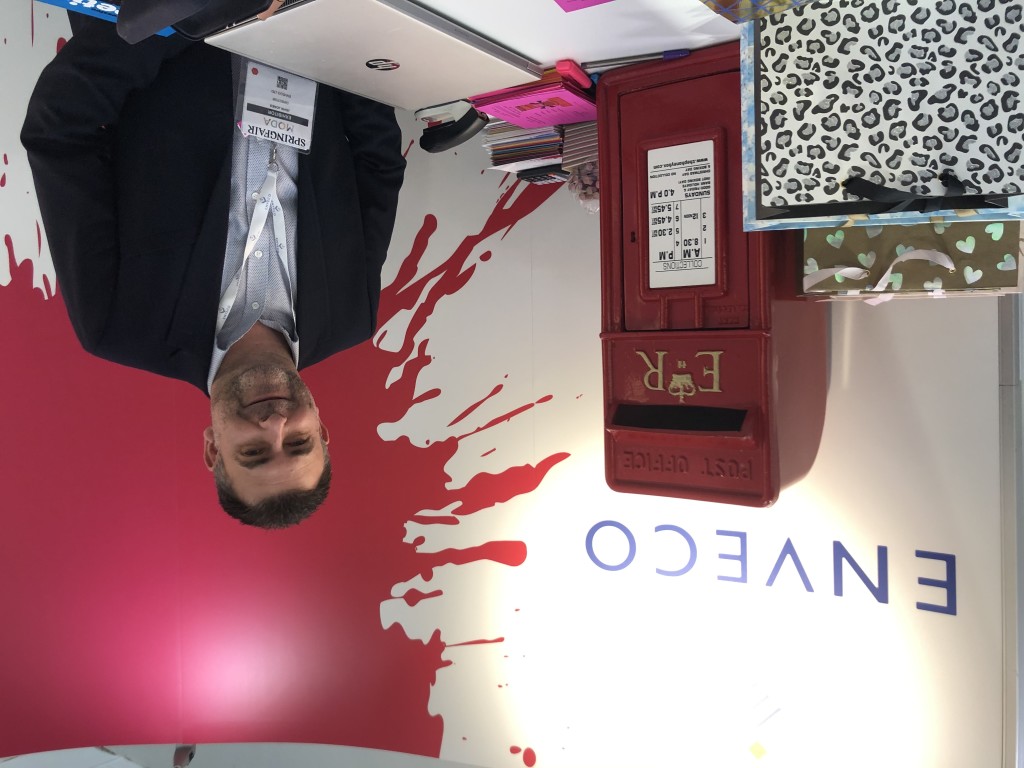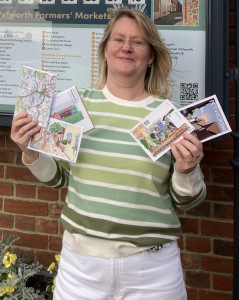Bira urges Government to help by cancelling planned Spring Budget business rates hike
At a time when UK inflation is at a 30-year high, today’s (17 March) announcement from The Bank Of England of the first in a series of expected interest rate hikes this year joins the growing list of surging costs the greeting card sector is currently addressing, all through the supply chain.
“In 25 years of working in this industry I have never seen such substantial and constant price increases,” states John Jones, sales director of Enveco, which provides many publishers with envelopes. “Circumstances have created the perfect storm, starting with Brexit and the additional associated costs, Covid-related delays, the global bounce-back after lockdowns, the demand for paper and board-related packaging as replacements for previously-used plastics and now the surging energy costs.”

John highlights that, with the scale of increases being experienced, it has been impossible for Enveco not to increase its trade prices, adding: “We are investing in higher levels of paper stock and placing orders a lot earlier to ensure continuity of supply but, there is no getting away from it, everything we use in our manufacturing process now costs a lot more than it did two years ago.”
In common with many others, John does not expect the cost rises to subside for some time.
“I can’t see this situation changing in the next six months or possibly even until the end of the year. I think everyone within the trade just will have to try and work with higher unit costs than previously experienced,” he says.
Tony Lorriman, managing director of specialist greeting card printer Loxleys, goes so far as to say that in his 30 years in the print industry he has “never known a period of sustained cost increases like we are currently experiencing, it is literally one thing after another!
“Every raw material and consumable item we purchase, even pallets, not to mention energy and distribution, has significantly increased in cost over the past six months with some items increasing several times either in the form of a traditional price increase or the in-vogue temporary surcharge or, in some cases, both.
“The cost increases we’re seeing are driven by macro issues occurring on a global scale so, although we always work with our supply partners to mitigate and minimise cost increases, the severity of the current situation means rising product costs are inevitable. This leaves us treading a very fine line between mitigating cost increases and ensuring continuity of supply.”

Sharing his perspective as both a publisher and a broker Seth Woodmansterne, managing director of Woodmansterne Publications, said that while the company has imposed some price increases, these in no way reflect the total cost increases it has had to absorb.
He says: “In reality, independent greeting card publishers who also supply some of the larger retail chains get only one chance to review their prices each year. By November 2021, it was obvious to us that year-on-year costs were escalating at rates unseen this century. We at Woodmansterne bit the bullet then and published our February 2022 price list with a modest average increase of 6.5%.
“However, when you add together board increases of 16-20% (ignoring paper shortages and delays), the massive fuel hikes and transportation levies, UK manual labour shortages from Covid and Brexit pushing wage inflation, uncapped commercial energy bills (up 25-100% depending on your luck)…6.5% looks modest indeed, and now hardly scratches the surface!”
Leading independent retailer Sally Matson, owner of Red Card in Petworth, is being selective as to how she is passing on price rises to her customers: “Such challenging times. The cost rises have been filtering through from suppliers more frequently since the start of the year. As a retailer, we are not able to pass all the increases on to our customers, as there are sensitive price thresholds of which we must be mindful.
“A perfect example is a product I was pricing this week which now works out at £3.05 retail, but was previously £2.95. I currently need to hold that product at £2.95. Where I feel that the price rise is reasonable and doesn’t go over these sensitive price points, then I am passing on the increase.
“There needs to be careful consideration of price rises between the wholesaler, the retailer and the consumer, and there needs to be a meeting in the middle ground. We are all going to have to take a hit to some extent.”

Sally is also keen to stress that publishers should be mindful of the discounts they are obviously affording multiple retailers.
She adds: “I find it particularly challenging when the larger card companies are selling products to supermarkets at far less than the cost they sell to the smaller independent retailers, meaning I find myself in a position where a card that I sell for £2.70 is available at Sainsbury’s for £2.00. In some circumstances there may be a difference in the quality of the paper stock used, but that is irrelevant as the customer perception is that the small independents are much more expensive than the supermarkets, and this myth is perpetuated by this behaviour – the customer thinks we are more expensive across the board.
“If the large card companies continue to sell in this way, they will end up only being stocked in supermarkets as, with the rising costs we are all facing, we will not be able to stock their brands alongside comparable product that is cheaper and more unique.”
Meanwhile, in the run-up to Chancellor Rishi Sunak’s Spring Budget statement, due on Wednesday, 23 March, Bira (the British Independent Retailers’ Association, which represents independent retailers including card and gift indies) is asking for the proposed increase in business rates to be cancelled.

“There will be real pressure on consumer spending, and we know that the costs of running a retail business are rising at a faster rate than sales,” comments Bira’s ceo Andrew Goodacre. “When the Chancellor makes his statement next week, we are therefore asking him to cancel the proposed increase in business rates and retain the amounts paid by business in 2021.”
While concerned about the rising costs of retail, Bira has responded to the BRC-KPMG Retail Sales Monitor for February 2022 with a degree of optimism.
The findings revealed non-food retail increased by 6.9% on a like-for-like basis over the three months to February while in-store sales of non-food items grew 57.2% on a like-for-like basis as online non-food sales decreased by 28.4% during February, compared with the substantial growth of 82.2% February 2021.
Andrew adds: “The UK economy bounced back in January, and better than expected. We have also seen retail sales growth in January and February with the return of people in shops and a reduction in on-line shopping.
“The recent set of figures would normally allow us to look forward with a degree of optimism. However, there is so much uncertainty at the moment, with rising inflation, rising business costs and the war in Ukraine, that any optimism is shadowed by real concerns for the rest of 2022.”
Top: Publishers, retailers and trade suppliers are weighing up what percentage of cost rises to pass on



















